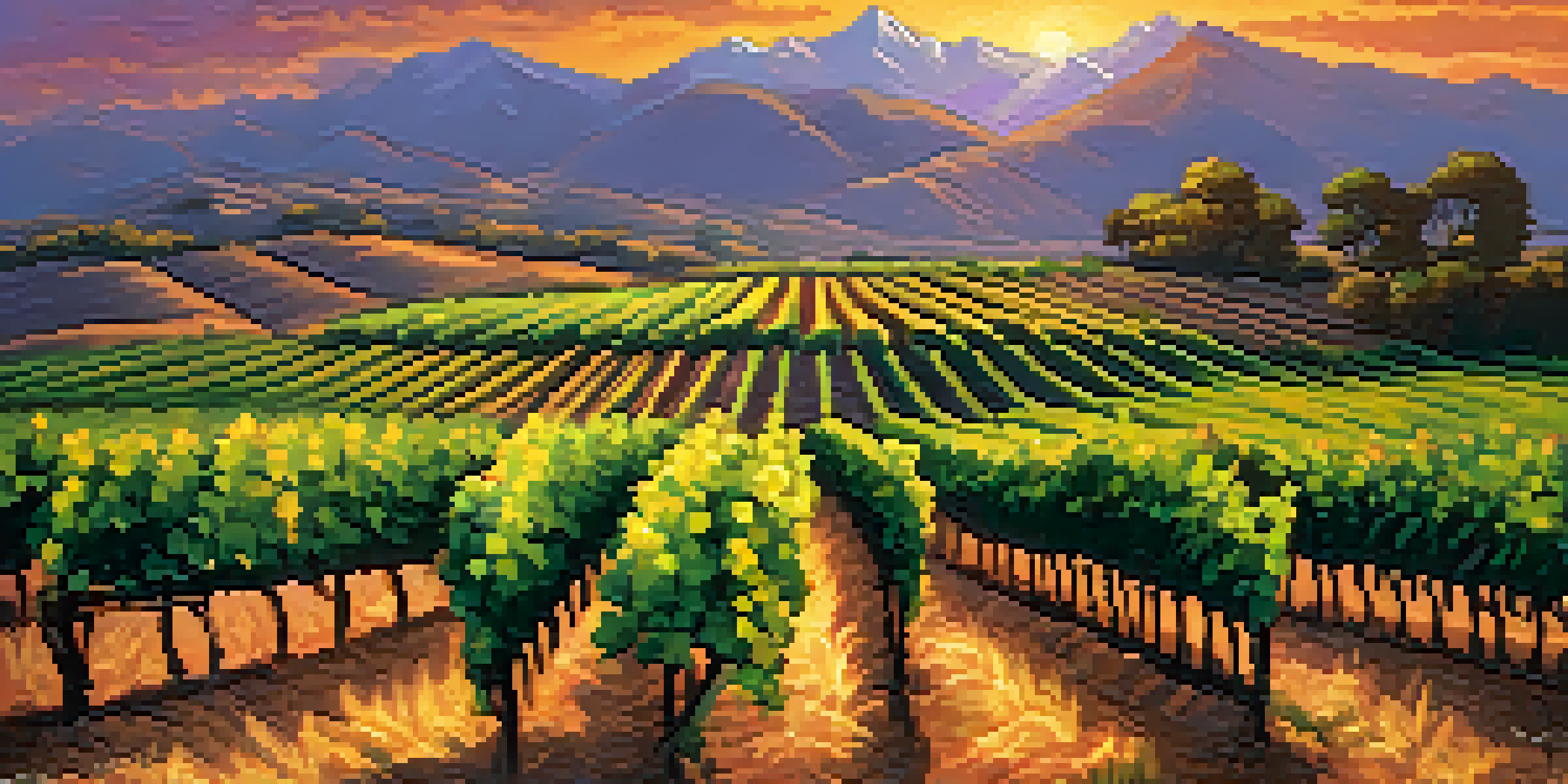The Role of Climate in Peru's Wine Regions and Varietals

Peru's Unique Wine Regions: A Climate Overview
Peru's wine regions are nestled between the Andes Mountains and the Pacific Ocean, creating a unique climate that influences grape growing. This geographical positioning allows for diverse microclimates, each with their own temperature and humidity levels. For instance, regions like Ica and Moquegua enjoy warm, sunny days and cooler nights, ideal for ripening grapes. Understanding these climatic nuances is crucial for wine producers aiming to develop high-quality varietals.
The Influence of Altitude on Wine Quality
One of the most fascinating aspects of Peru's wine climate is its altitude. Many vineyards sit at elevations ranging from 1,000 to 3,000 meters above sea level. This altitude not only enhances sunlight exposure but also leads to cooler temperatures at night, which helps preserve acidity in grapes, resulting in fresher wines. For example, high-altitude vineyards in the Andes produce exceptional varieties like Torrontés, known for its aromatic profile.
Unique Climate Shapes Wine Quality
Peru's diverse microclimates, influenced by the Andes and Pacific Ocean, create ideal conditions for growing high-quality grapes.
Microclimates: Small Changes, Big Effects
Within Peru's wine regions, microclimates play a significant role in determining the characteristics of different grape varietals. A small shift in elevation or proximity to water can create variations in temperature and humidity, affecting everything from the sugar levels in grapes to their flavor profiles. This is why two vineyards located just a few kilometers apart can produce wines that taste remarkably different, showcasing the diverse terroir of Peru.
The Role of Soil in Grape Development
While climate is undoubtedly important, soil type is another critical factor in Peru's wine production. The varied soil compositions in regions like Ica include sandy, clay, and rocky soils, each imparting unique characteristics to the wines. For instance, sandy soils can promote drainage and encourage deep root growth, which helps vines withstand drought conditions. This interplay between soil and climate ultimately shapes the quality and style of the wines produced.
Altitude Enhances Grape Freshness
High-altitude vineyards in Peru preserve acidity in grapes, resulting in fresher and more aromatic wines.
Key Grape Varietals Thriving in Peru's Climate
Peru's diverse climate supports a wide range of grape varietals, each reflecting the unique environmental conditions. Some of the most prominent varietals include Malbec, Cabernet Sauvignon, and the indigenous Quebranta grape. These grapes thrive in the warm, dry conditions of Ica, where the climate allows for extended ripening periods. As a result, Peruvian wines are gaining recognition for their rich flavors and complex profiles.
Challenges Posed by Climate Change
Like many regions worldwide, Peru's wine industry faces challenges due to climate change. Shifting weather patterns can lead to unpredictable rainfall and temperature extremes, both of which can affect grape quality. For example, increased heat can cause grapes to ripen too quickly, resulting in wines that lack balance. Vineyard owners are now more focused than ever on sustainable practices to adapt to these changes and ensure long-term viability.
Sustainability is Key for the Future
Peruvian winemakers are adopting sustainable practices to combat climate change and ensure long-term grape quality.
Sustainable Practices in Peruvian Wine Production
In response to climate challenges, many Peruvian winemakers are adopting sustainable practices. These include organic farming, water conservation techniques, and biodiversity initiatives aimed at preserving the local ecosystem. By fostering a healthier environment, producers can improve grape quality and resilience against climate-related issues. Such efforts not only benefit the wine but also the communities involved in the production process.
The Future of Wine in Peru: A Climate Perspective
Looking ahead, the future of wine in Peru is both promising and precarious, heavily influenced by climate conditions. As producers continue to innovate and adapt to changing climates, we can expect the emergence of new varietals and styles. Additionally, growing global interest in Peruvian wines may encourage further investment in sustainable practices. Ultimately, the interplay between climate and winemaking will shape the narrative of Peruvian wine for years to come.